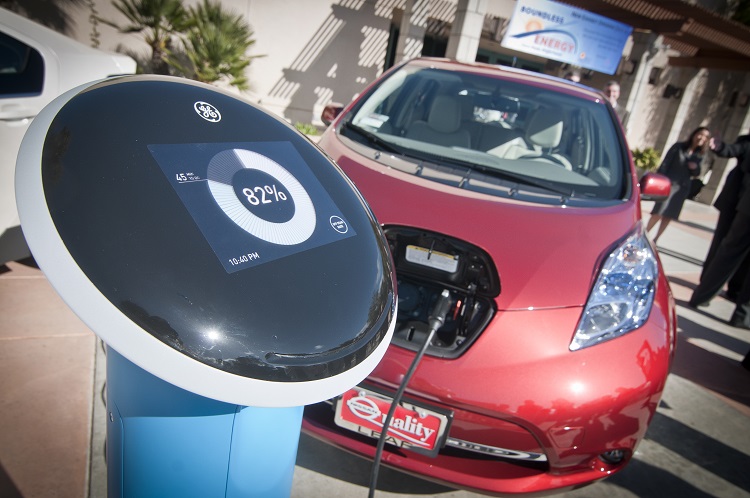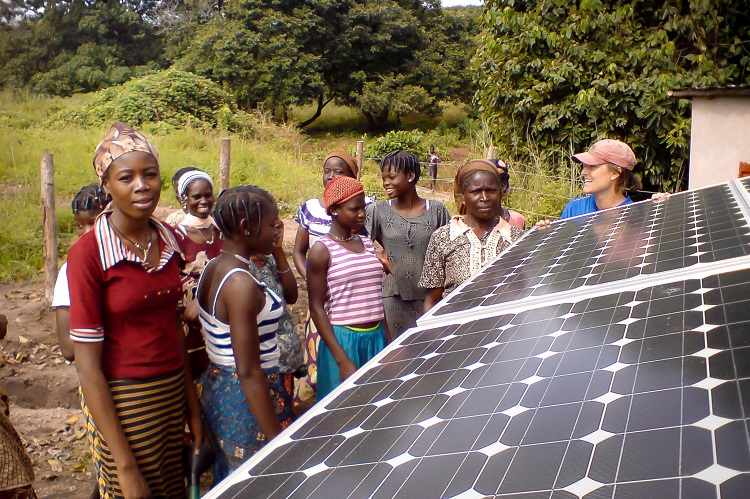Research at the Intersection of Policy and Technology
UC San Diego faculty and researchers have tremendous strengths in the key fields of science and engineering related to low-carbon and zero-carbon energy production. We also have deep expertise in the social sciences — including policy, strategy and economics. Work in all those areas continues on campus.
One of the ways that the Deep Decarbonization Initiative will add value is by organizing (and sponsoring) work that combines different disciplines — especially work focused on grand challenges in the transformation of energy systems. The failure to solve challenges like these help explain why the world, despite working on the climate problem for over 25 years, hasn't yet made much serious progress in cutting emissions. Globally, emissions are still rising.
Here are four examples or practical grand challenges — all areas where teams of UC San Diego scholars working across disciplines are active. All are related, in different ways, to what matters for global decarbonization: getting the whole planet to zero in the real world. All will be areas of major attention as the Deep Decarbonization Initiative unfolds.
Radical decarbonization of the electrical grid
 Re-inventing the electric power system is the most central challenge in global decarbonization. Most world energy models envision that deep decarbonization will require massive electrification because it will be easier to control emissions at major sources of power generation and then move energy to its final uses by wire.
Re-inventing the electric power system is the most central challenge in global decarbonization. Most world energy models envision that deep decarbonization will require massive electrification because it will be easier to control emissions at major sources of power generation and then move energy to its final uses by wire.
Is this true—that a world that radically decarbonizes is a world that electrifies? How will socieites decarbonize while not amplifying other challenges the power grid is facing, including cyber threats and reliability? As more socieities try to decentralize the grid — such as is being planning in California and New York — will that make it easier or harder to decarbonize? Answering these questions is essential to making progress on practical decarbonization of the electric power system.
Radical decarbonization of the transportation system

Transportation — dominated by oil and oil-derived liquid fuels — uses a very large amount of energy and is one of the biggest drivers of the world’s energy economy. Yet it is also a difficult sector to decarbonize, since existing oil-derived transportation fuels offer enormous advantages: They have high power density, most of them are liquids (and are thus easy to store across a wide range of temperatures), and they are relatively inexpensive.
There’s a great contest now unfolding in transportation about how to reduce emissions, with three main options available:
- Transition to biofuels or synthetically generated liquid fuels, which would allow much of the existing infrastructure and vehicle stock to remain in place while changing to a low-emission energy source;
- Switch to battery electric vehicles; or
- Design vehicles with on-board fuel cells or other methods that could, for example, transform hydrogen energy fuel carriers into useful energy.
Currently, electric vehicles are the widely favored strategy for decarbonizing light-duty cars and trucks. But it isn’t clear that battery electrification is the right solution for all modes of transportation. UC San Diego researchers are taking a fresh look at all three options.
For instance, there may be a role for hydrogen fuel cell vehicles in the medium- and heavy-duty trucking sectors, where batteries are too heavy to efficiently power trucks.
As with many technologies that are nascent but promising, fuel cell vehicles require policy support. Since 2023, UC San Diego scholars have been assessing California’s fuel cell vehicle policies to understand what the state has done right, where it’s missed the mark, and how it can do better moving forward. That work is currently under peer review.
Delivering energy for all
 Making energy supplies more reliable and secure for all, while cutting carbon emissions to nearly zero, is of upmost importance. More than 1 billion people do not have access to electricity. Perhaps double that amount do not have reliable power supplies and rely, instead, on primitive biomass energy systems. It is essential that decarbonization policies not harm the ability of these populations to develop. At the same time, many of the energy activities in these rural and low-income communities can have a huge negative impact on the climate — from causing emissions of fine particles that warm the climate to deforestation that emits warming gases.
Making energy supplies more reliable and secure for all, while cutting carbon emissions to nearly zero, is of upmost importance. More than 1 billion people do not have access to electricity. Perhaps double that amount do not have reliable power supplies and rely, instead, on primitive biomass energy systems. It is essential that decarbonization policies not harm the ability of these populations to develop. At the same time, many of the energy activities in these rural and low-income communities can have a huge negative impact on the climate — from causing emissions of fine particles that warm the climate to deforestation that emits warming gases.
Teams of scholars at UC San Diego and with partner instiutions are looking at how these disadvantage communities can gain access to modern energy while cutting their pollution footprint. The answers lie partly with new technologies, such as cookstoves. But they hinge on social institutions — better business models and new energy policies.
Carbon in the atmosphere: How will we know?
 Verification will play a key role in emerging global carbon emissions reductions efforts. For decades, colleagues at Scripps Institution of Oceanography at UC San Diego have been in the lead in measuring atmospheric CO2 concentrations — indeed the iconic Keeling Curve is named after the pioneering work of Charles Keeling from Scripps.
Verification will play a key role in emerging global carbon emissions reductions efforts. For decades, colleagues at Scripps Institution of Oceanography at UC San Diego have been in the lead in measuring atmospheric CO2 concentrations — indeed the iconic Keeling Curve is named after the pioneering work of Charles Keeling from Scripps.
By making precise measurements of trace gas concentrations and using these together with meteorological data, researchers can determine localized emission rates of these gases. As these techniques are refined, they will permit the emission rates of CO2 — as well as other pollutants — to be determined at the local, regional, state and national levels.
Thus, for the first time, the commitments of nations and other actors to reduce the emission of greenhouse gases can be subjected to independent verification. This capability opens up the possibility of carrying out field-level experiments to determine what policies, incentives and technologies are most effective in reducing emissions.
